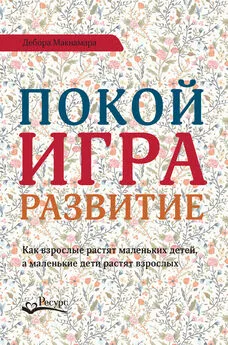Ленора Чу - Китайские дети - маленькие солдатики
- Название:Китайские дети - маленькие солдатики
- Автор:
- Жанр:
- Издательство:Литагент Синдбад
- Год:2020
- Город:Москва
- ISBN:978-5-00131-208-6
- Рейтинг:
- Избранное:Добавить в избранное
-
Отзывы:
-
Ваша оценка:
Ленора Чу - Китайские дети - маленькие солдатики краткое содержание
Китайские дети - маленькие солдатики - читать онлайн бесплатно ознакомительный отрывок
Интервал:
Закладка:
Individualized Education for All”. People’s Daily, March 8, 2013. Fu, Genyue, et al. “Chinese Children’s Moral Evaluation of Lies and Truths: Roles of Context and Parental Individualism-Collectivism Tendencies”. Infant and Child Development 19:5 (2010), 498–515.
Guilford, J. P. “Creativity”. American Psychologist 5:9 (September 1950), 444–454.
Han Han. “Shower with the Quilted Jacket On”. Posted on Sina.com, September 29, 2009.
Kim, Kyung Hee. “Learning from Each Other: Creativity in East Asian and American Education”. Creativity Research Journal 17 (2005) 4: 337–347.
Liu Chang. “Chinese Company Successfully Manufacturers Ballpoint”. Posted on cctv.com, January 10, 2017.
Li Xiying, et al. “The Relationship of Youth’s Creative Personality and Creativity: A Comparative Study between China and U.S.”. Psychological Exploration 34 (2014) 2: 186–192.
Postiglione, Gerard. “Improving Transitions: From School to University to Workplace”. Asian Development Bank, 2012.
Robinson, Ken. Creative Schools: The Grassroots Revolution That’s Transforming Education. Penguin Publishing Group, 2016.
SASAC. “China Aerospace Science and Industry: Fully Tap into the Role Creativity Plays in Corporate’s Development”. Posted on 163.com, December 7, 2012.
Schmitz, Rob. “Why Can’t China Make a Good Ballpoint Pen?” APM’s Marketplace, December 14, 2015.
Schwinger, Malte, et al. “Academic Self-Handicapping and Achievement: A Meta-Analysis”. Journal of Educational Psychology 106:3 (2014), 744–761.
Shen Jiliang. “The Cultivation of Creative Talents in China Through Intercultural Comparison”. Chinese Talents 11 (2014).
Staats, Lorin K. “The Cultivation of Creativity in the Chinese Culture – Past, Present, and Future”. Journal of Strategic Leadership 3:1 (2011), 45–53.
State Council of the CPCCC. “Advice on Policies That Promote Popular Entrepreneurship and Innovation”. July 16, 2015.
“The 13th Five Year Plan for National Education Development”. January 19, 2017.
Wadhwa, Vivek, et al. “America’s New Immigrant Entrepreneurs, Parts I–VII”. Duke University, Master of Engineering Management Program; University of California−Berkeley, School of Information, January 4, 2007.
“Globalization of Innovation”. Kauffman Foundation of Entrepreneurship, June 2008.
“Skilled Immigration and Economic Growth”. Applied Research in Economic Development 5 (2008): 1.
Xia Guming. “Research on Students’ Critical Thinking,” Posted on People Education Press, February 7, 2012.
Xiao Gangling. “Why Not Educate Students to ‘Challenge Authority’ during Conventional Teaching?” China Education News Network, May 14, 2015.
Yangguang News. “Li Keqiang Gave an Important Delivery on the Symposium on Reform and Innovation of Higher Education”. April 18, 2016.
Yun Ma. “If I Graduated from Tsinghua or Peking University”. Zhejiang Chamber of Commerce in Shanghai, ninth member meeting. Posted on Sina.com, December 8, 2014.
Zheng, Yefu. The Pathology of Chinese Education. CITIC Press, 2013.
Interviews include Jim Cocoros, David Didau, Andreas Schleicher, Brian Steuter, James Stigler, Jie Zhang, Yang Xiaowei, Zheng Zhou. Benchmarking for Success. Report by the National Governors Association. Council of Chief State School Officers and Achieve, Inc.
Center on International Education Benchmarking. “9 Building Blocks for a World-Class Education System”. ncee.org, December 2016.
China Youth Daily. “British Visit Shanghai to Learn How to Teach Mathematics”. Posted on edu.com, February 28, 2014.
Crawford, Claire, and Jonathan Cribb. “Reading and Maths Skills at Age 10 and Earnings in Later Life: A Brief Analysis Using the British Cohort Study”. Institute for Fiscal Studies, March 8, 2013.
Duncan, Greg. “School Readiness and Later Achievement”. Developmental Psychology 43:6 (2007), 1428–1446.
Education Online. “The Number of People Studying Abroad from 2006 to 2012”. Report of overseas study. Posted on Education Online, 2013.
Fuller-Rowell, T., and S. Doan. “The Social Costs of Academic Success across Ethnic Groups”. Child Development 81:6 (2010), 1696–1713.
Grant, Leslie, et al. West Meets East: Best Practices from Expert Teachers in the U.S. and China. ASCD, 2014.
Huntsinger C. S, et al. “Cultural Differences in Early Mathematics Learning: A Comparison of Euro-American, Chinese-American, and Taiwan-Chinese Families”. International Journal of Behavioral Development 21:2 (1997), 371–388.
Jerrim, John. “The Link between East Asian ‘Mastery’ Teaching Methods and English Children’s Mathematics Skills”. Economics of Education Review 50 (2016), 29.
Kirschner, Paul A. “Why Minimal Guidance during Instruction Does Not Work: An Analysis of the Failure of Constructivist, Discovery, Problem-Based, Experiential, and Inquiry-Based Teaching”. Educational Psychologist 41:2, 75–86.
Klahr, D., and M. Nigam. “The Equivalence of Learning Paths in Early Science Instruction: Effects of Direct Instruction and Discovery Learning”. Psychological Science 15:10 (2004), 661–667.
Ma, Liping. Knowing and Teaching Elementary Mathematics: Teachers’ Understanding of Fundamental Mathematics in the United States and China. Routledge, 2010.
Ministry of Science and Technology. “Outline of the National Plan for the Development of Science and Technology for 1978−1985 (Draft)”. Posted on the Ministry of Science and Technology website. December 1977.
Morgan, Paul, et al. “Which Instructional Practices Most Help First-Grade Students with and without Mathematics Difficulties?” Educational Evaluation and Policy Analysis (2014).
Niu, W., and Z. Zhou. “Teaching Mathematics Creativity in Chinese Classrooms”. In Nurturing Creativity in the Classroom. Cambridge University Press, 2010.
Peterson, Paul E., et al. “Globally Challenged: Are U.S. Students Ready to Compete?” Prepared under the auspices of Harvard’s Program on Education Policy and Governance, and Education Next, August 2011.
Ryan, Julia. “American Schools vs. the World: Expensive, Unequal, Bad at Math”. Atlantic, December 10, 2013.
Shellenbarger, Sue. “The Best Language for Math: Confusing English Number Words Are Linked to Weaker Skills”. Wall Street Journal, September 15, 2014.
Siegler, R. S., and Y. Mu. “Chinese Children Excel on Novel Mathematics Problems Even before Elementary School”. Psychological Science 19:8 (2008), 759–763.
Stevenson, Harold, James W. Stigler. Learning Gap: Why Our Schools Are Failing and What We Can Learn from Japanese and Chinese Education. Summit Books, 1992.
Sztein, Ester, and National Research Council. The Teacher Development Continuum in the United States and China: Summary of a Workshop. National Academies Press, 2010.
Vigdor, Jacob. “Solving America’s Math Problem”. EducationNext 13 (2013), 1.
Winifred, Mark, and Ann Dowker. “Linguistic Influence on Mathematical Development Is Specific Rather than Pervasive: Revisiting the Chinese Number Advantage in Chinese and English Children”. Frontiers in Psychology 6 (2015), 203.
Zhao, D., and M. Singh. “Why Do Chinese-Australian Students Outperform Their Australian Peers in Mathematics: a Comparative Case Study”. International Journal of Science and Math Education 9 (2011), 69.
Zhou, Zheng, et al. “Understanding Early Mathematical Competencies in American and Chinese Children”. School Psychology International 42:3 (2005), 259–272.
Zhou, Zheng, and Stephen Peverly. “Teaching Addition and Subtraction to First Graders: A Chinese Perspective”. Psychology in the Schools 42 (2005), 3.
Interviews include Zhang Zhizhong, Sheen Zhang, Teacher Mao, Teacher Song, Xiaodong Lin, Zhang Huiping.
Alexander, Scott. “The Parable of the Talents”. Slate Star Codex blog, January 31, 2015.
Bjork, Robert A. “Memory and Metamemory Considerations in the Training of Human Beings”. Metacognition: Knowing About Knowing. MIT Press, 1994.
Borden, Jonathan. Confucius Meets Piaget: An Educational Perspective on Ethnic Korean Children and Their Parents. 2nd edition. Seoul Foreign School, 2003.
Dolton, Peter, and Oscar Marcenaro-Gutierrez. Global Teacher Status Index. Varkey GEMS Foundation, 2013.
Dweck, Carol S. “Caution – Praise Can Be Dangerous”. American Educator (Spring 1999).
Gong Shanshan, “The Positive and Negative Effects of Rewards and Punishment in Education and Proper Ways of Using Them”. Studies in Logic 26 (2006), 190–193.
Heffernan, Virginia. “Drill, Baby, Drill”. New York Times Magazine, September 16, 2010.
Hirsch, Ed. “You Can Always Look It Up, or Can You?” American Educator (Spring 2000).
Hong, H.-Y., and X. Lin-Siegler. “How Learning about Scientists’ Struggles Influences Students’ Interest and Learning in Physics”. Journal of Educational Psychology. First published online November 11, 2011.
Hsin, Amy, and Yu Xie. “Explaining Asian Americans’ Academic Advantage over Whites”. Proceedings of the National Academy of Sciences 111 (2014), 23.
Maslen, Geoffrey. “Chinese Children ‘Learn Good Study Habits at Home’ ”. South China Morning Post, September, 20, 2008.
Most Likely to Succeed. Documentary by One Potato Productions, 2015.
Ni Mingjin. “Empowered Administration Program for Rural Schools of Compulsory Education”. Posted on the Shanghai Municipal Education Commission website, March 7, 2013.
Tatto, Maria, et al. Policy, Practice and Readiness to Teach Primary and Secondary Mathematics in 17 Countries. International Association for the Evaluation of Educational Achievement, 2012.
Tan, Li Hai, et al. “Brain Activation in the Processing of Chinese Characters and Words: A Functional MRI Study”. Human Brain Mapping 10 (2000), 16–27.
Tobin, Joseph, et al. Preschool in Three Cultures Revisited: China, Japan, and the United States. Yale University Press, 1991.
Tucker, Marc. “Why Have American Education Standards Collapsed?” Education Week, April 23, 2015.
China Education Online. “China Becomes the Top Overseas Student Export Country, Total Number Continues to Rise”. Posted on ifeng.com, May 7, 2014.
“2014 Overseas Studying Trend Report.” eol.cn, 2014.
Gao Liang and Li Yaoming. “Seeking the Force for Change: Report on the Education Reform of No. 11 School”. China Education News Network, April 2, 2014.
Jiefang Daily. “National Day School, Why Do We Choose You?” Posted on xschu.com, February 14, 2014.
Lambert, Phil. “Expanding Horizons: What Can Educators in China and Australia Learn from Each Other?” Paper presented at Nanjing Normal University, China, April 9, 2012.
Lan Fang. “According to a Survey, There Are 100 Thousand People in China Received Non-School Education”. Posted on Caixin Net, May 14, 2014.
Li Jieren, “Why Can’t Other Schools Learn from Beijing National Day School?” March 16, 2015.
Li, Yulan, and Zhenguo Zhu. “Why Does the Rate of College Entrance Test (Gaokao) Participation Keep Declining Year by Year?” GuangMing Daily, June 6, 2011.
Ministry of Education of the PRC. “Statistics of Foreign Students Studying in China 2014”. March 18, 2015.
Ministry of Education of the PRC, Headquarters of the General Staff, General Political Department. “Guideline for Military Training of High School Students”. January 30, 2003.
Читать дальшеИнтервал:
Закладка:
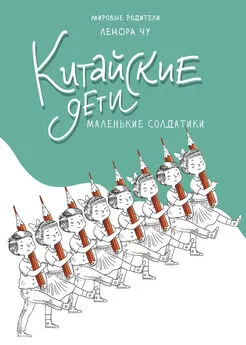
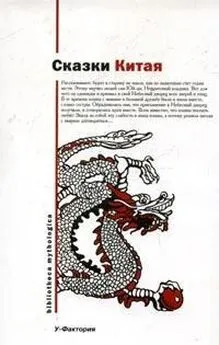
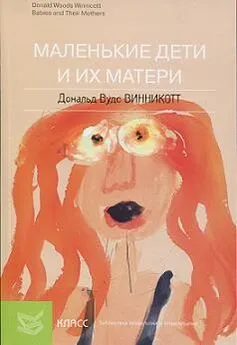


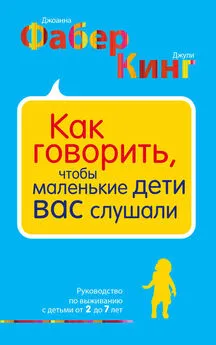
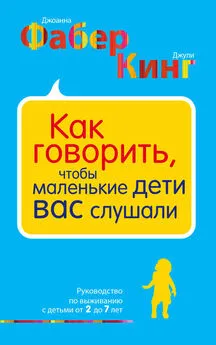
![Владимир Медведев - Трилогия о Мирьям [Маленькие люди. Колодезное зеркало. Старые дети]](/books/1096517/vladimir-medvedev-trilogiya-o-miryam-malenkie-lyud.webp)
